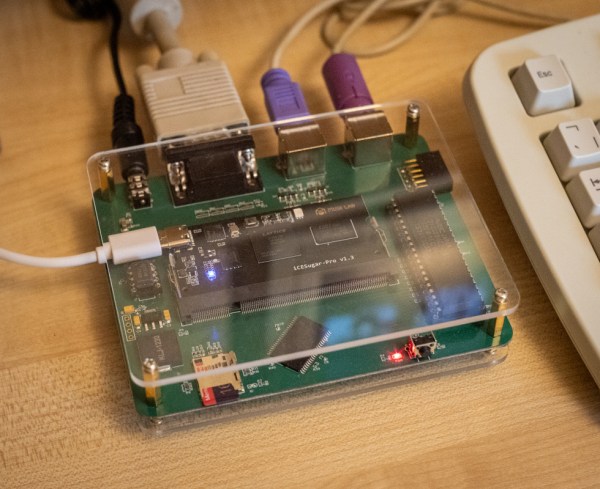For the retro gaming enthusiast, nothing beats original hardware. The feel of the controllers and the exact timing of the original, non-emulated software provide a certain experience that’s difficult or impossible to replicate otherwise. To that end, [bit-hack] wanted to play the original EGA, 16-color version of The Secret of Monkey Island in a way that faithfully recreated the original and came up with this FPGA-based PC with a real NEC V20 powering it all.
The early 90s-style build is based on a low-power version of the V20 called the V20HL which makes it much easier to interface with a modern 3.3 V FPGA compared to the original 5 V chip. It’s still an IBM XT compatible PC though, with the FPGA tying together the retro processor to a 1 MB RAM module, a micro SD slot that acts as a hard disk drive, a digital-to-analog audio converter, and of course the PS/2 keyboard and mouse and VGA port. The mouse was one of the bigger challenges for [bit-hack] as original XT PCs of this era would have used a serial port instead.
With a custom PCB housed in a acrylic case, [bit-hack] has a modern looking recreation of an XT PC running an original processor and capable of using all of the period-correct peripherals that would have been used to play Monkey Island when it was first released.
FPGAs enable a ton of retrocomputing projects across a wide swath of platforms, and if you’re looking to get started the MiSTer FPGA project is a great resource.
















